Lies Of P
Written by - Codiak
Updated: September 15, 2023
|
Posted: September 13, 2023

Here’s the headline – “Lies of P may be the best souls-game ever created by a developer that isn’t FromSoftware”, full stop. You heard me right, this game is absolutely incredible, and while it does have a few shortcomings, almost every second I played this game, I enjoyed it.
Now you might be asking yourself, Codiak, what in god’s name is Lies of P, and what gives with the weird name. Well, I can’t answer the latter because I agree it’s not a great title, but the former I can definitely shed some light on.
Lies of P is a true Soulsborne game. You play as P or Pinocchio, and you travel through the fictional city of Krat unraveling the cause of a mysterious puppet rebellion. Essentially all the automatons went haywire and as Geppetto’s master creation it’s your job to bring harmony to the chaos.
Everything you’d expect from a souls game is present:
- Wickedly tuned 3rd person action
- A stamina based combat system
- Weapons that are both practical and sometimes downright ridiculous
- A resource, in this case Ergo, which is used to as currency to increase stats
- A plodding and often vague story
I mean seriously it’s all there. If you told me this game was some FromSoft side-project I probably would have believed you. It’s clear…crystal clear that the developers of Lies of P have studied the intricacies of the Dark Souls games because there is so much familiarity between the core systems that you almost forget you’re playing a souls game, for better or for worse.

However, the team does surprise on more than a few fronts with new and unique features that I found strangely refreshing. They largely focus on what I consider to be quality of life changes, but there are more than a few twists and turns along the way.
Lies of P may be the best souls-game ever created by a developer that isn’t FromSoftware
A Student of the Genre
So, for starters Lies of P features a static difficulty. There is no ramping up and certainly no way to ramp down if things get too hard, and brother let me tell you, there are moments of this game that are extremely hard. There is a fair number of souls veterans who will be pleasantly surprised with some of the ways the team injects difficulty into the game.
Lies also features that iconic heavy and methodical combat. There’s a huge emphasis on risk vs. reward, and it plays out in almost the exact same way as a Dark Souls game. I would say that Lies puts more pressure on the player because of the way enemies are designed and that forces you to stay “in the fight” more than you might be comfortable with, which is definitely a learning curve.
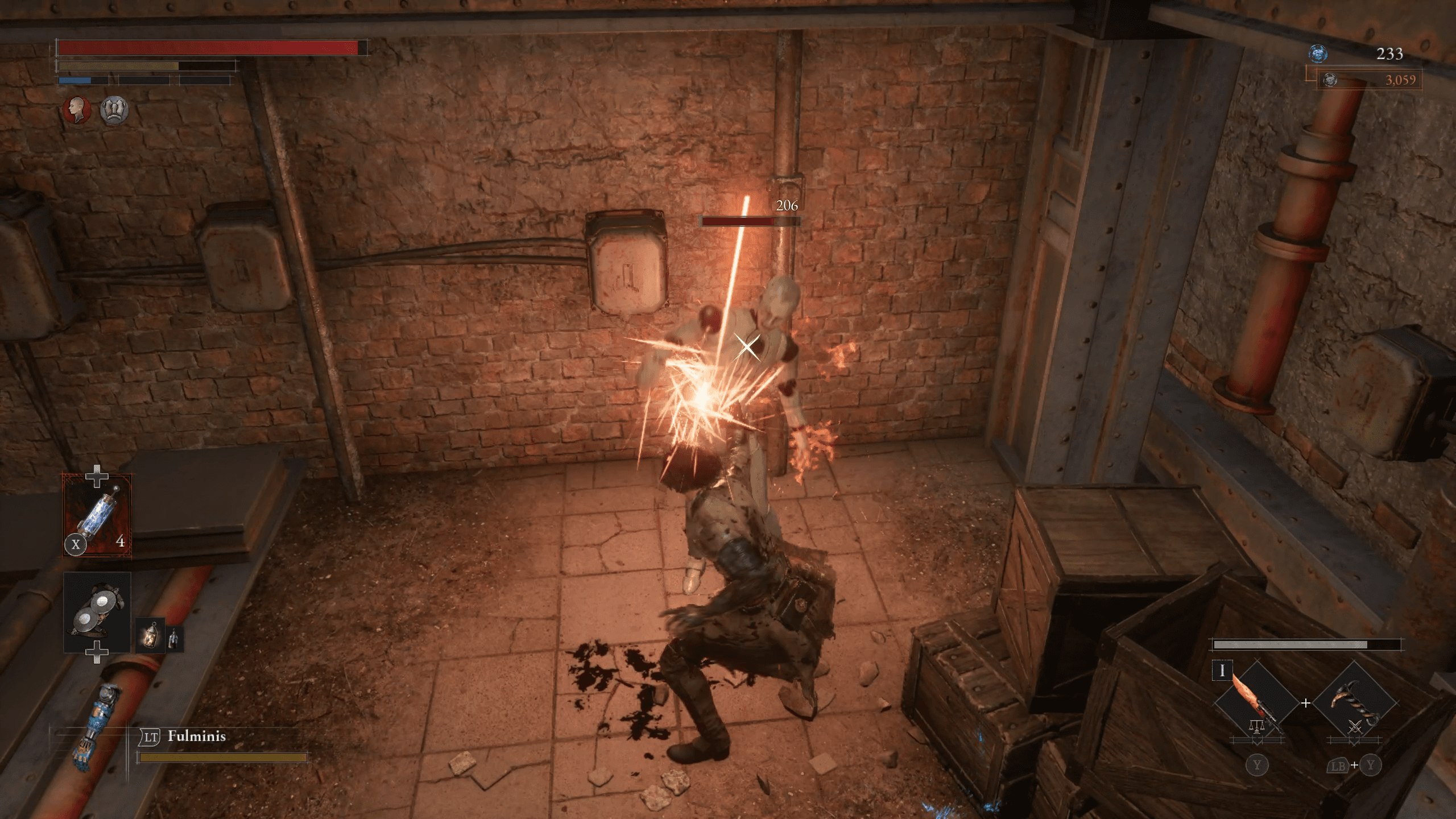

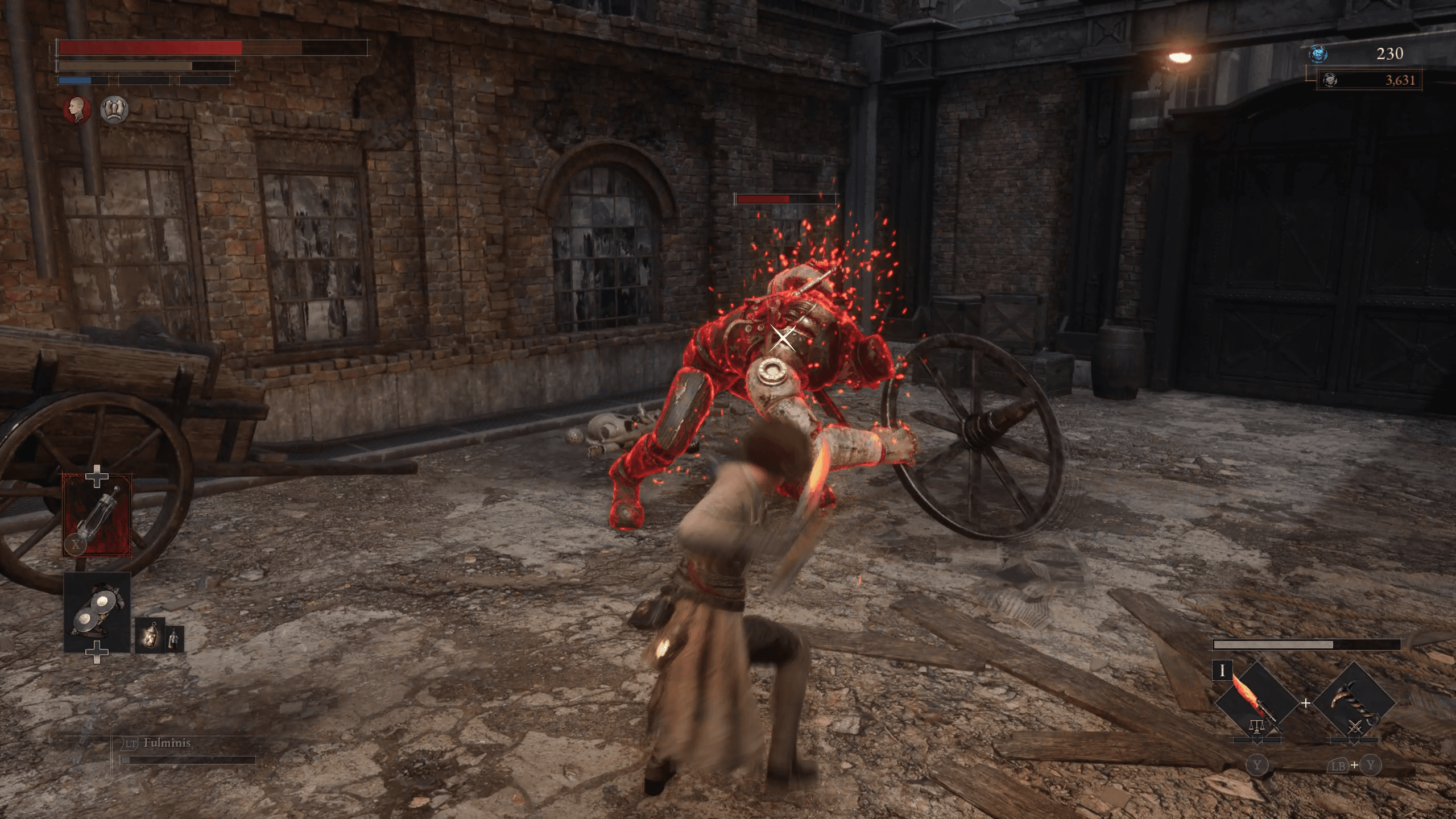

There’s also that sense of linear micro-exploration that DS2 and DS3 did so well. Lies is definitely not Elden Ring and there is very little in the way of going off the beaten path, but for a game that is so linear there are enough small alleyways and random dead ends with something to loot that your head will be spinning.
The game itself is just presented in much the same way as Bloodborne, largely due to the overlapping time periods. Bloodborne was set in the Victorian Era, while Lies of P is set in the Belle Epoch period which spans the last few decades of the Victorian Era. All that to say, things will look and feel very similar to a FromSoft game, with the addition of dozens upon dozens of automatons and the industrialist infrastructure that comes with it.

Where Lies of P is most impressive in its understanding of the souls genre is in the boss fights, which are presented and executed in such a similar way that again, you almost forget you’re playing a game created by an entirely different team. Let me be clear, I’m showing you the first boss, absolutely nothing else because that same “shock and awe” so often employed by FromSoft is on full display multiple times throughout Lies. You can even summon companions to aid you in boss fights, which…I mean, come on, is right out of the FromSoft playbook. You can call it a copycat…call it a ripoff but I would disagree, because it’s clear developers are students of the genre, not trying to create a cheap clone to make some money.

All that being said the game is not Dark Souls 4 and while it might look like a new entry into the Darksouls or Bloodborne series you can feel that it’s not. For starters the combat controls encompassing movement, dodging, attacking, and blocking feel stiffer than a FromSoft title. That perfect iFrame window exists within Lies of P, but managing to dodge at the perfect time doesn’t have that same buttery smooth experience we’ve come to expect.
You can say the same thing on the combat side, which feels a litte, pardon the, probotic. It’s far better than most of the souls-alternatives out there, but there’s still that little something that you can feel during the moment-to-moment gameplay that lets you know you’re playing a game created by someone else. Part of this is due to the fact that Lies strikes a more balanced approach when it comes to dodging and blocking. You can focus on one or both strategies, and build your character accordingly which opens up the combat to more variation.
To be clear I don’t want any of this to be a turn off because, while I want to be fair in my assessment of the game, a little stiffness hardly dissuaded me from pressing deeper into the game.
What The Game Does Different
So as I’ve hopefully made clear there’s a lot of similarities between Lies of P and a Dark Souls game, but there’s also plenty that differs and I want to focus in on those systems for a minute because for the most part they’re unique ways to differentiate the games.
At the heart of the game is a unique weapon system. Each weapon breaks down into two parts: a blade and a hilt. Each has their own set of individual properties, including a built-in Fable, the name given to special abilities in the game. The beauty is, you’ll almost always find these in pairs, a blade and hilt that go together, but take those parts back to Hotel Krat, your safe haven in the game, and you can combine elements of different weapons to create something entirely new.
Mixing and matching weapons is such a simple, yet elegant way to add a ton of variety into the combat, and since fables are tied to individual weapon parts it adds a further layer as you build out your arsenal. I can see some players not liking that abilities aren’t independent from the various components, but honestly it never bothered me as I continued to toy with my build throughout the entire game, never truly relying on one weapon to carry me through.

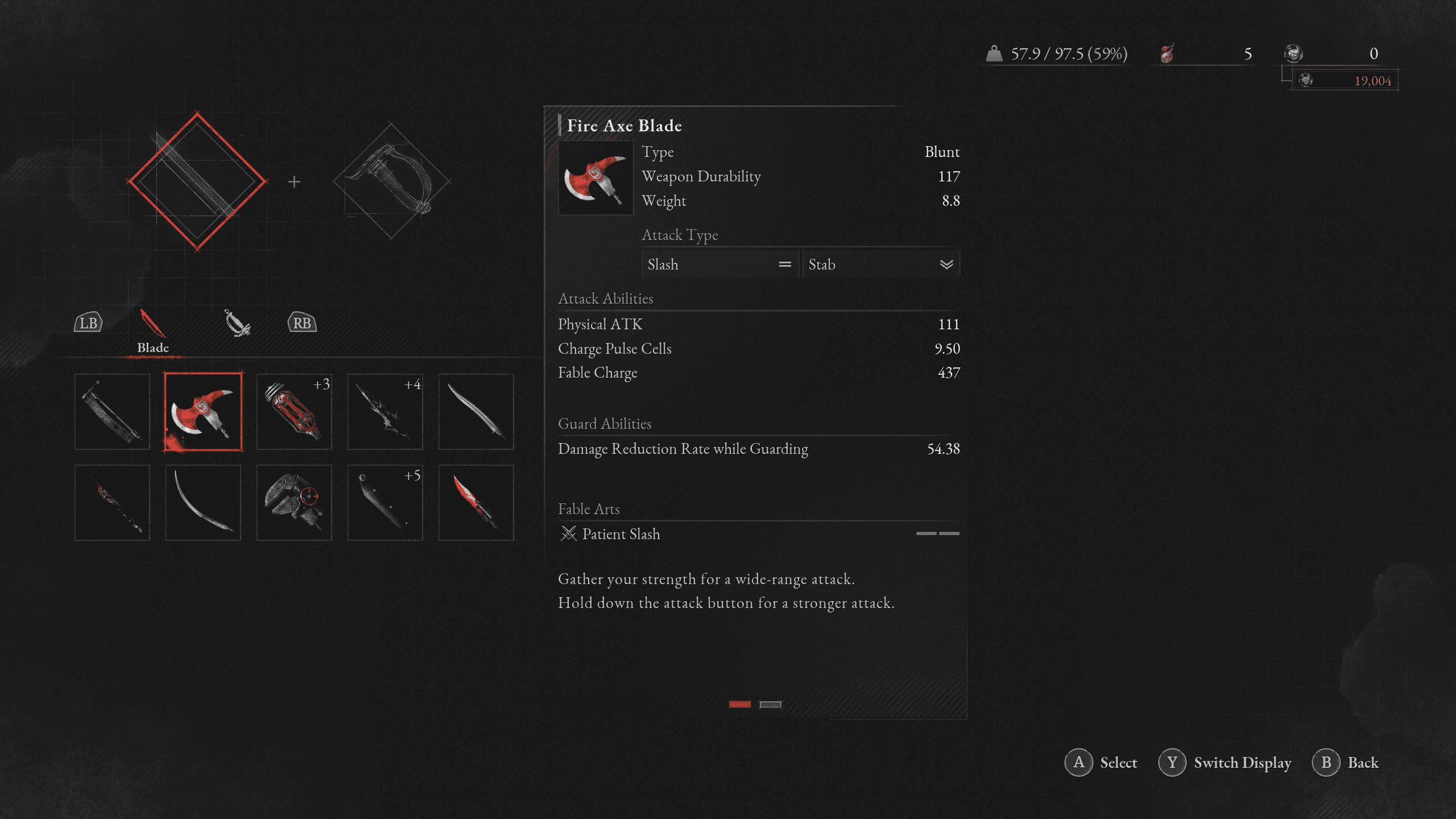
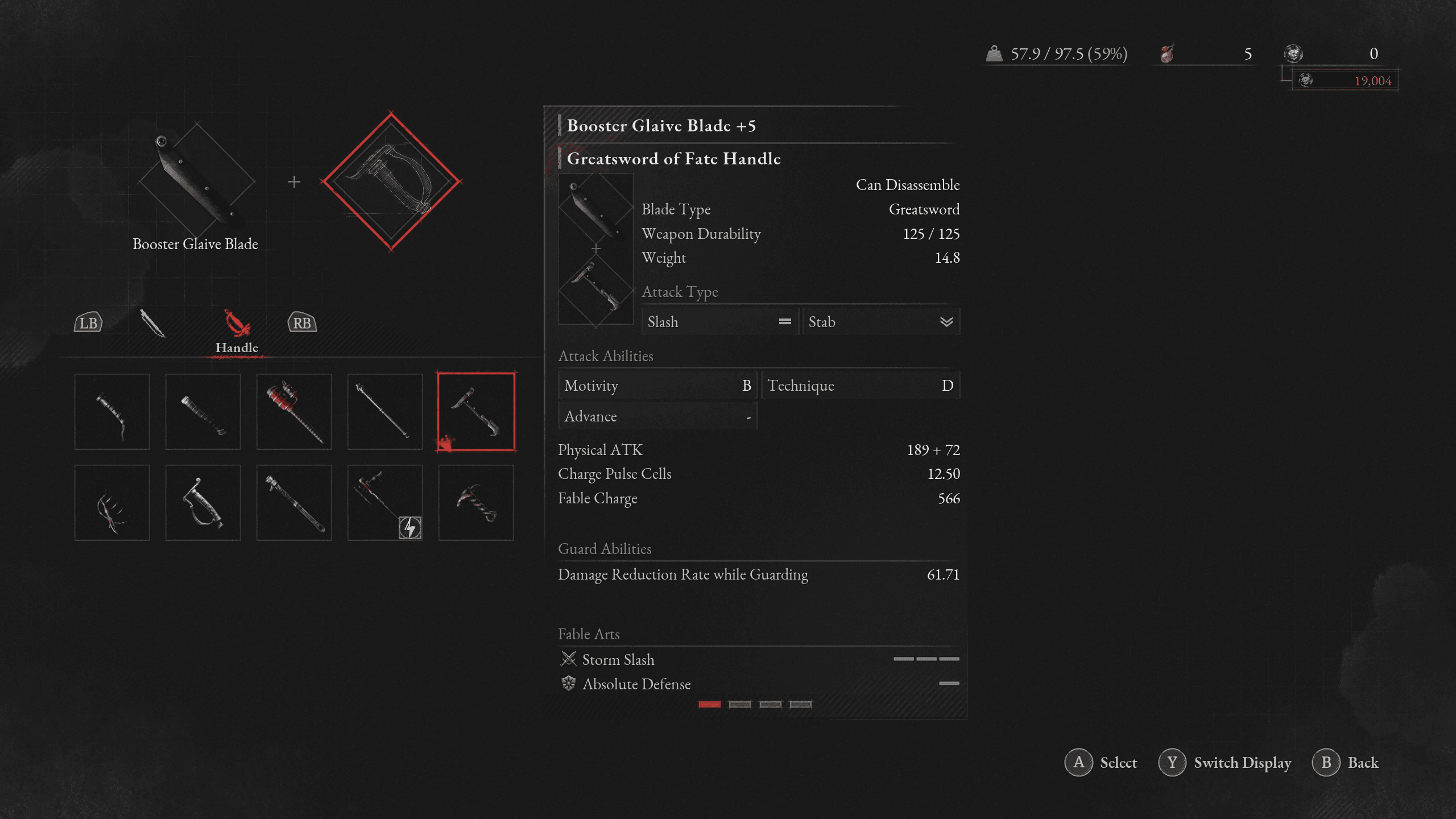
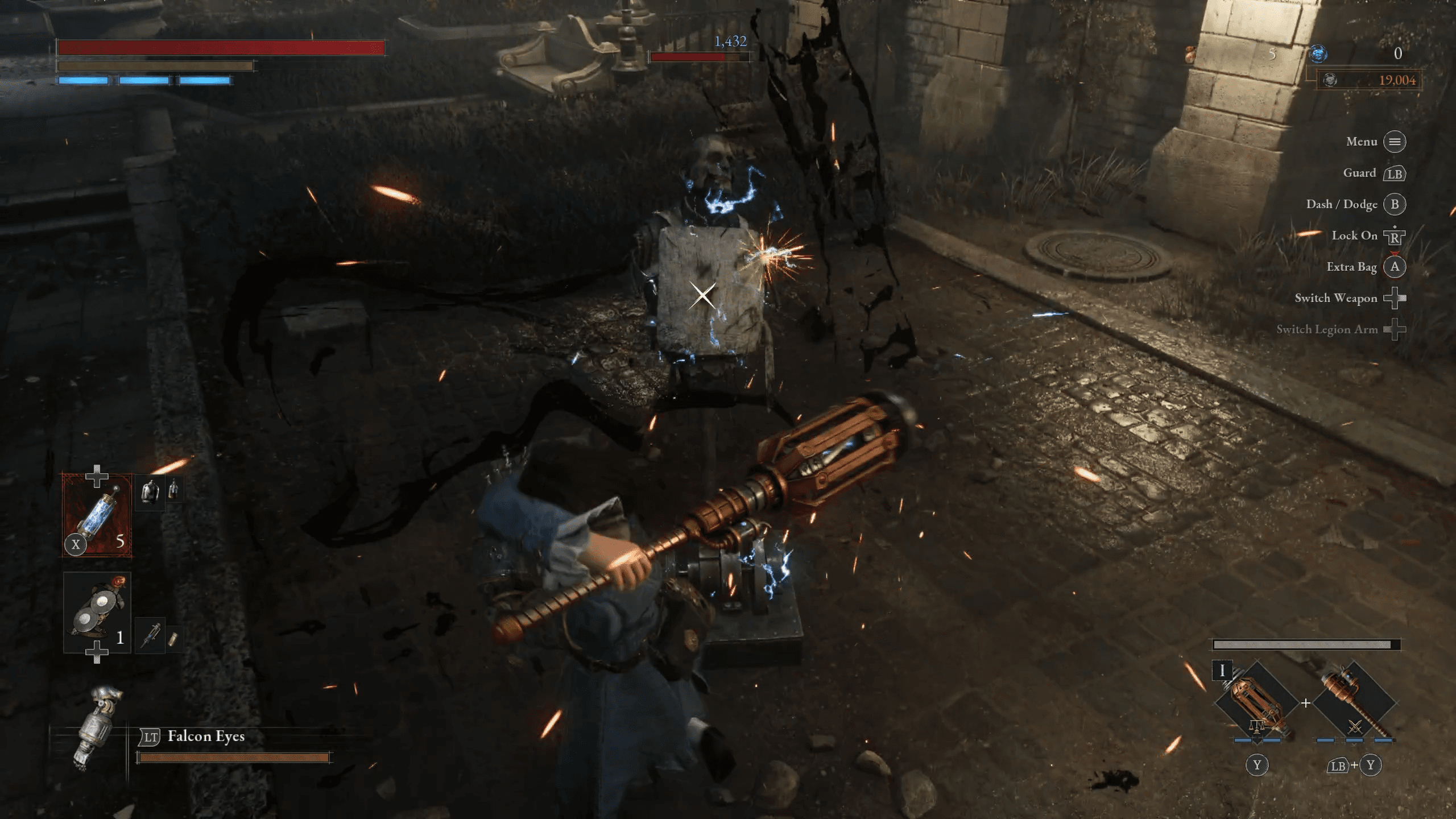
Fables, while not entirely new, definitely present themselves as a standalone system. As you attack you build up a Fable and since youre equipped weapon will always have two parts that means you’ll always have access to two fables. For the most part these break down into augmentations, which increase your damage or add an elemental effect, or maneuvers, complicated attacks you can execute with the push of a button.
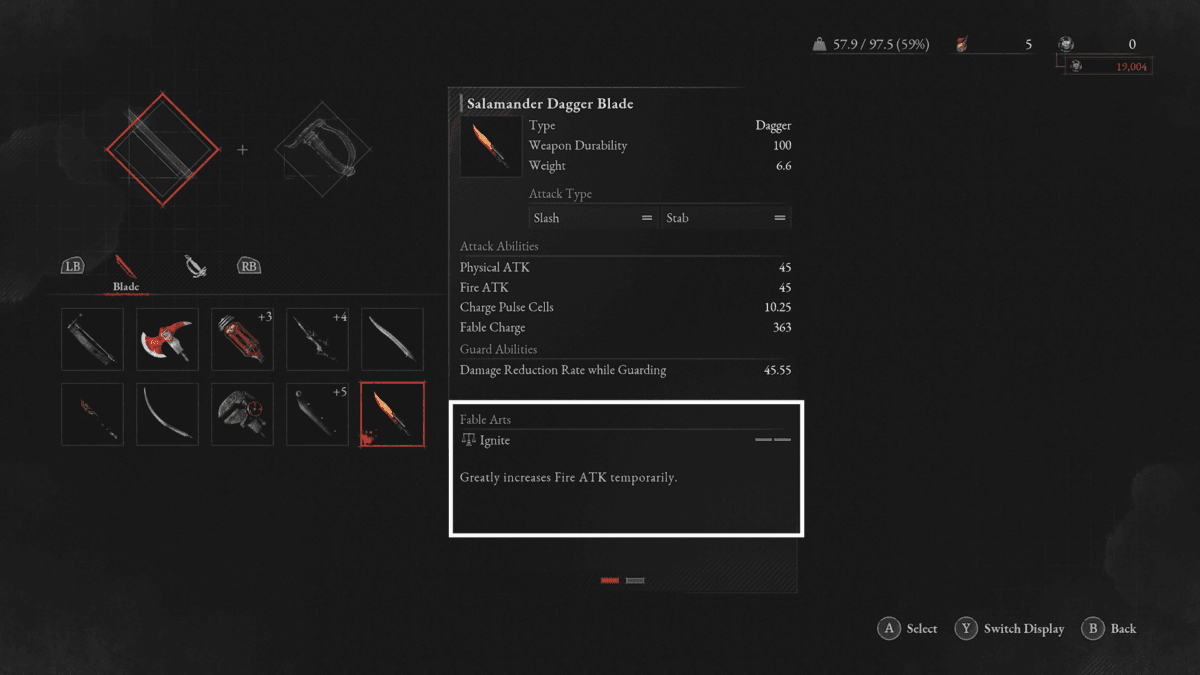
One thing Lies of P brings to the table is the Legion Arm system, which is essentially a special ability that can be triggered mid-combat. The system functions off a separate resource and depending on which arm you have attached can bring different functionality to an encounter. Some arms include:
- Puppet String which essentially harpoons enemies and pulls them to you
- There’s also the Fulminis which allows you to charge and shoot a burst of static energy
- There’s also the Flamberge` which you can hold to unleash a stream of fire
- And one of my favorites the INSERT NAME which allows you to hold and block an attack, detonating an explosive when an enemy hits you
There’s a decent amount of variety and this system gets even deeper when you consider that each arm has up to 4 enhancements that you can unlock as you find the right crafting reagent.

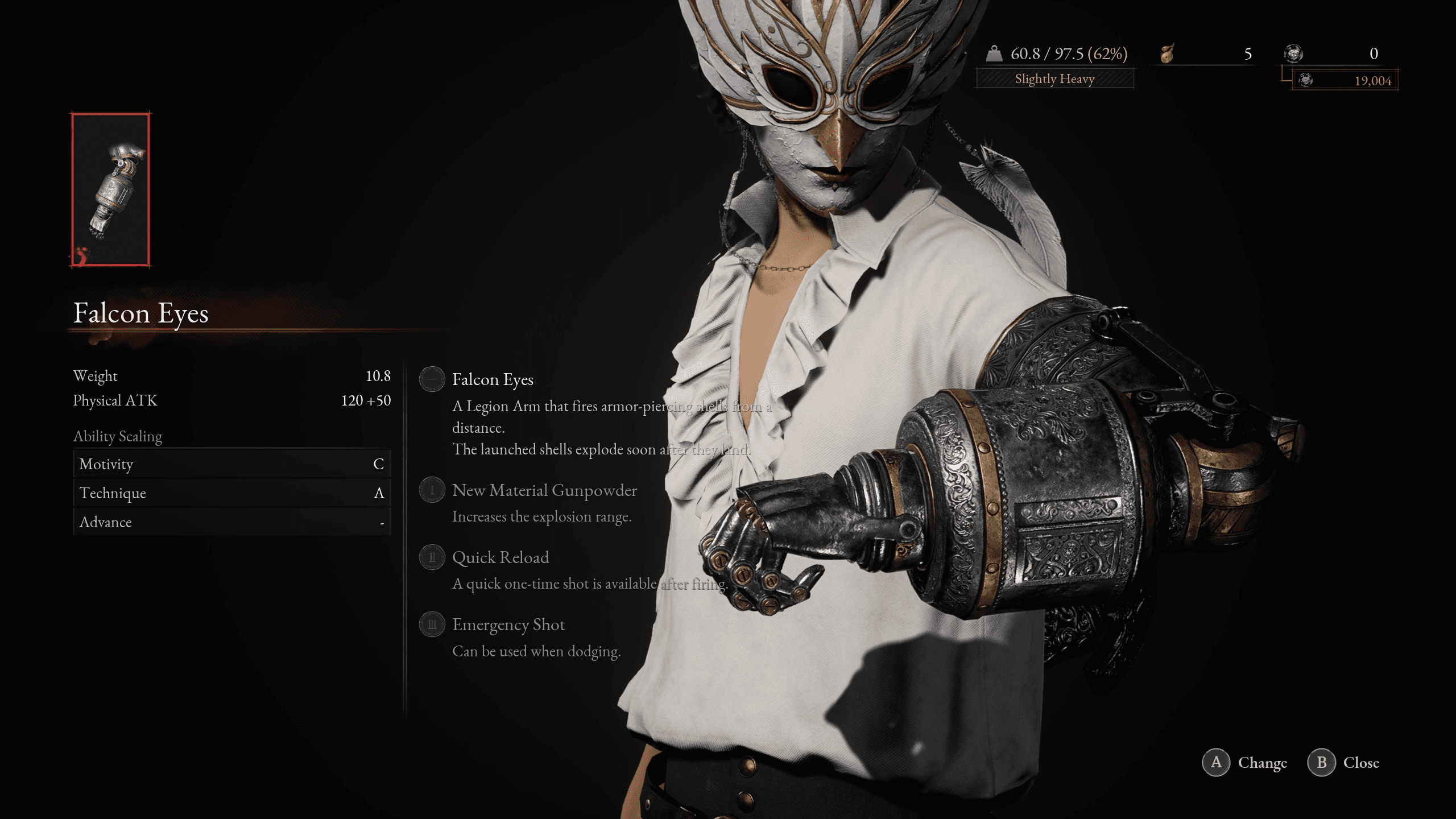


To be honest I thought this was going to be a gimmick, something I used at the beginning because I felt I needed to, but I genuinely rely on the Legion Arm every chance I get, and I actively swap around my arms based on the types of enemies I’m fighting. For example puppets are susceptible to electric attacks and while in most games I might just power through and ignore something like that, in Lies of P you better believe I’m changing my Legion Arm around because every little advantage matters.
I mentioned some quality of life changes that Lies introduces players to and while they’re tied to various systems they are unique to the game so let’s talk about them.
First is the durability system, which is rather clever. Throughout combat, with each attack and block your durability goes down. If that reaches zero your weapon breaks and you’ll have to switch to something else or return to a Stargazer, this game’s equivalent to a bonfire, to repair it. However, you can use your grinder, mid-combat and repair its durability. It’s a simple hold to repair system, and there’s even a layer of augmentation that you eventually unlock that allows you to imbue your weapon with a specific element for a short period of time.

To be honest this doesn’t impact your gameplay too much, but certain debuffs will speed up how quickly your weapons lose durability, which is when you’ll need to actively manage this system. If you don’t and a weapon breaks you’re pretty much out of luck.
There’s also the skill tree system called P-Organs which is more akin to an RPG than a traditional souls-game. Throughout your adventures, specifically after defeating tougher enemies or mini-bosses, you’ll gain Quartz which you can use to enhance a core element of your character. For example, one P-Organ enhancement allows you to increase the enemies stagger window. By slotting Quartz you also get to choose a sub-enhancement that is catered more towards your playstyle. These roughly fall within offensive, defensive, legion, and item categories. Choosing where to allocate points is a huge deal as there is a finite amount of Quartz during your progression, arguably the time when you’ll need the benefits the most.
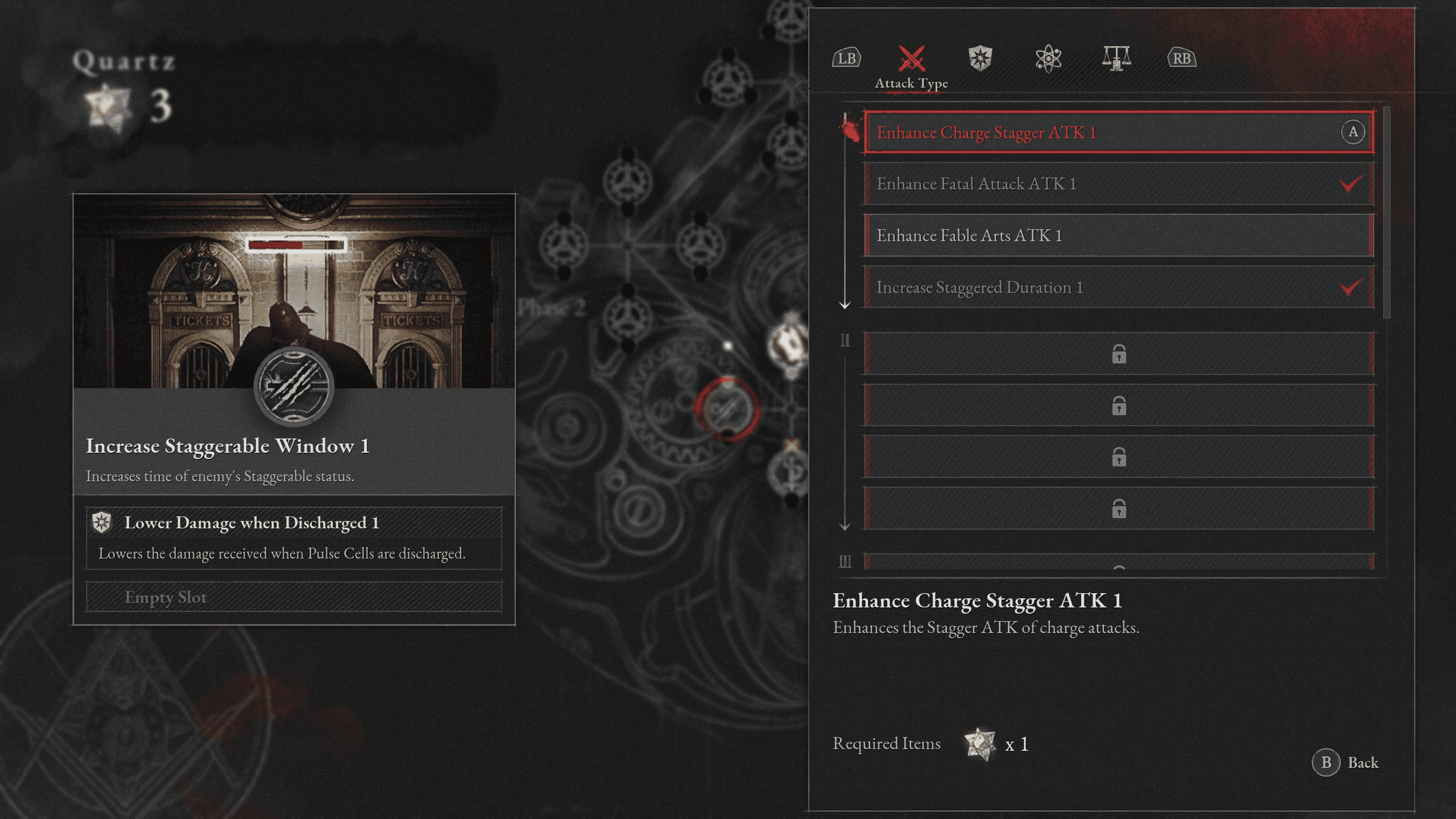
While this does add an RPG slant to the Lies of P experience, I would classify the system as another quality-of-life change to the formula because as I’ve talked about a few times the game’s tuning is tight, and it’s all built around core progression systems. That being said I would say that P-Organs wasn’t something that necessarily excited me about the game. It was great to have better enhancements, but it was far from a standout system.
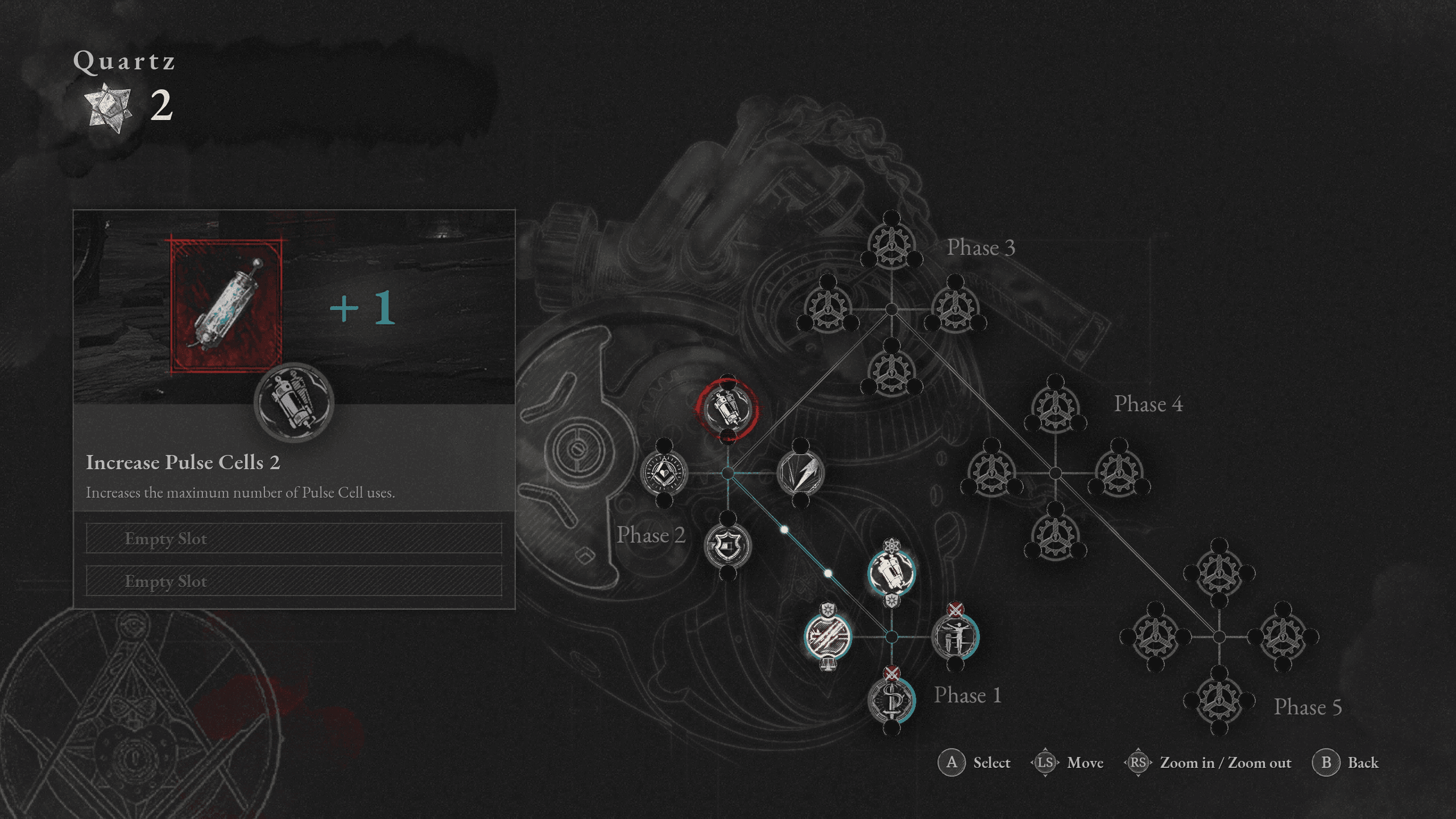
Lies of P also takes some of the smaller systems and tweaks them just a bit to be slightly more convenient for players. For example, when you take damage you have a retaliation window that allows you to regain a portion of that health if you land an attack on an enemy.
Additionally, your Pulse Cell, or health flask, can recharge when empty simply by attacking enemies. This doesn’t create a scenario where you never run out of healing charges, but it does provide you with a little more protection, which could be a difference maker during a fight.
These small changes are everywhere and something simple, like Ergo appearing outside of a boss arena, instead of inside of it, allows you to focus all your attention on the action, as opposed to a minor distraction before the main event. These things add up and for the most part round out an array of systems that not only offer variety to players, but depth and convenience.
What Works & What Doesn’t
I wanted to spend a good deal of time breaking down each of the unique systems because when it comes to souls games, we all have a pretty entrenched understanding of what the genre brings to the table, so when a game like Lies of P introduces a different concept it’s worth calling out. That being said, there are aspects of any souls game that we, as players, have come to expect, and at a high level, so let’s dig into that in the final section of this video to understand where the game nails it, and where it falls flat.
As far as the combat is concerned I feel like Lies of P nails it. It doesn’t play exactly like a FromSoft game, but that doesn’t mean it’s bad and in this case it’s the opposite…it’s quite good. The more balanced approach to blocking vs dodging took some getting used to but it offers a level of playstyle flexibility that I found refreshing. Where I think the game reaches peak souls-like is during the boss fights, and from the presentation to the massive scale of these encounters Lies of P just absolutely nails it. There’s some quirkiness, especially with the larger enemies, but that’s almost a staple of the genre, but what I really enjoyed was how all the pieces come together from the weapons and abilities, to the art direction and the bosses and their encounter areas, to the overall experience and, most importantly, satisfaction of defeating them. It all works incredibly well.
Where the game doesn’t quite do it for me is with the story which I really haven’t discussed up until this point. To be honest it doesn’t do it for me, there’s just not enough here to get me excited or to actually care about what’s going on at a deeper level. I actually think building the game around Pinnochio is the single biggest barrier to entry. It’s weird to put it simply, and based on my experience with the game the team could have created something entirely new which would have been more accessible to players. Even the title, Lies of P is just a bit off, and doesn’t lend itself to getting people excited about the game. Once you’re actually playing you meet characters you might recognize from the source material but none of it really comes together.



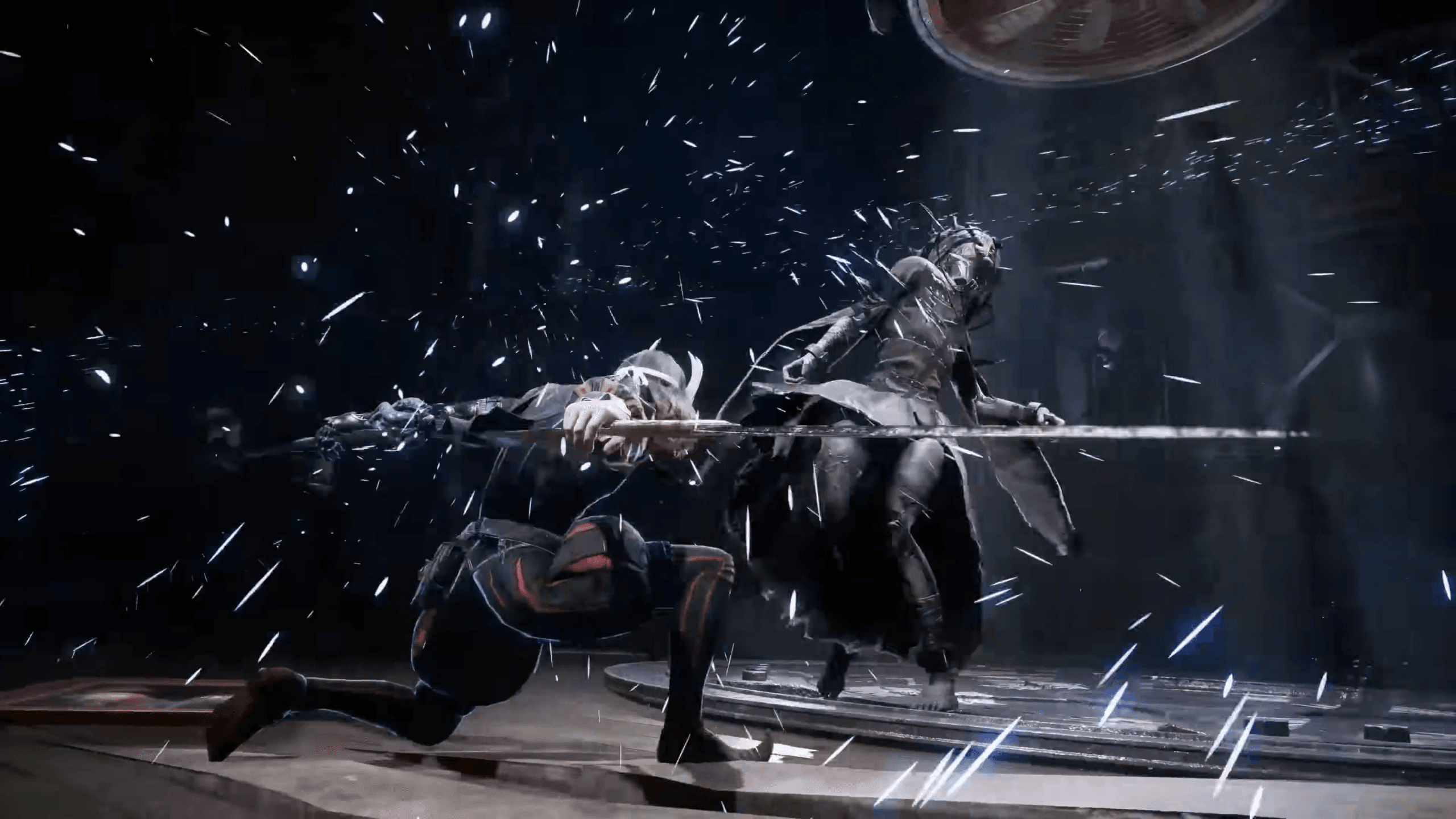
You’re a boy puppet created by a genius inventor, but oh yeah there’s this other inventor…he’s rich so that’s different, and don’t forget about this creepy old lady who’s actually good…I think. It’s really convoluted and not at all the end to end storytelling you would consider well executed. Add onto that the pretty mediocre voice acting and it was pretty clear to me the story would not be the defining aspect of this game. It’s a real bummer because I think this piece alone holds the game back from true greatness.
That being said, environmental storytelling is spot on and the art direction throughout the game is really well done. I was generally impressed with this aspect of the game up until the point where I entered a specific cathedral, and that’s really when things got interesting. It was the first time the game was showcased on a larger scale, and it worked. That didn’t necessarily translate to the exploration, which was relatively confined, but the team absolutely maximized the potential of a larger footprint. I had to constantly check my expectations because at times I was hoping for slightly bigger, slightly more, but then had to remind myself this is a studio with no previous experience in this genre. That’s not a knock by any stretch…I wanted more because what they were already delivering was engaging.
Where things get a little gray is with all the changes to the overall souls-formula. I believe change is good, so when a game like Lies of P introduces new ideas into an equation that’s already well-defined I look at that as an opportunity for improvement, not developers trying to buck the system. In this case I think most of what they introduce works. For starters the Legion Arm system adds a nice dimension to combat, and with the ability to invest to upgrade individual arms you can really double down on their potential.




In harmony with that are the weapons themselves which all feel distinctly their own. There are different types like daggers, great swords, and polearms, but because they’re broken down into blade and hilt you get such an interesting mix and match system that I think a lot of souls vets are going to enjoy. Switching around your equipment can and does add such variety to the way your character behaves in combat from the weight of each attack to the special abilities, again…fables, that he can deploy. It’s really well done and while combat itself isn’t quite as smooth as FromSoft the system that feeds into it really does set up the action nicely.
Final Verdict
To break it all down into just a few sentences. Lies of P is absolutely a game worth checking out in 2023. I personally think it will fly under the radar mainly because of its weird name and less than accessible story. However, everything else about the game is rock solid and like I said in the intro, if I didn’t know better I would have believed Lies of P was created by the crew over at FromSoftware. Considering the fact that Round 8 only has one other title under their belts, Bless Unleashed, this is pretty shocking and something to be damn proud of. I can tell you after about 15 hours with the game I’m still jonesing for more which you know is always a good sign.






